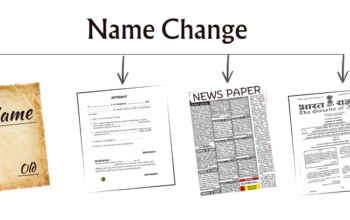You arrive at work at 9:00 a.m., a little later than usual, with a slight headache. Before making your morning coffee, you sit at your desk to quickly check emails and make phone calls.
To your surprise, you discover ten missed calls and six emails from the salesperson who has just returned from a business trip. And guess what, they are experiencing critical logistical issues and require your immediate assistance.
Although you’ve resolved the salesperson’s issues after two hours and seven phone calls later, but you’re still stressed, and behind on your work, and your headache has worsened.
And, at the same time, it is a dire need for you to get out, and travel for long hours to get everything on track. But you’re stuck between so much that doing multiple things in an organized way is not possible at all.
In this kind of scenario, it’s time to consider implementing a business travel program, the only thing that can make things more organized. How? Let’s find out.
What Exactly is a Business Travel Program?
A business travel program, also known as a corporate travel program, entails putting in place a well-defined set of company-specific policies, guidelines, and roles. These policies and guidelines are intended to improve the efficiency and comfort of business travel.
Why Do You Need a Corporate Travel Program?
Corporate travel management programs provide numerous benefits, which we will discuss in more detail later on in this article.
However, on a brief note, in order to remain competitive in today’s business world, companies must look to be highly efficient. And, to that, an effective corporate travel program can help your employees and managers to spend less time on time-consuming travel planning, allowing them to focus on more meaningful tasks and important company decisions. Ultimately, fulfilling the goal, that is making business operations more efficient.
How Does a Business Travel Program Work?
Two ways in which it works, which are:
A corporate travel program streamlines and standardizes travel policies across the entire organization, often with the help of business travel app or software from a corporate travel management company. As a result, travel expense limits and general travel guidelines are easily accessible to traveling employees, reducing the need for repeated inquiries. Furthermore, ITILITE is a software that provides a market-leading travel expense management software solution, which can also help you with corporate travel programs.
An effective business travel program, whether managed in-house or through a travel agency, ensures a dedicated support team available 24 hours a day, seven days a week. As a result, any travel-related issues or emergencies, such as flight cancellations or rental car issues, are resolved quickly and efficiently. Ultimately, this method saves employees and managers from being distracted from time-sensitive tasks.
What are the Benefits of Having Corporate Travel Programs?
No doubt, the benefits are many.
For starters, a well-executed business travel program can significantly improve company efficiency, potentially resulting in higher profits. Furthermore, managers can shift their focus from logistical travel planning to advancing the company’s goals. Another hidden benefit is that a managed travel program can reduce short-term business travel costs by utilizing corporate credit cards and negotiated contracts.
In all of this, using travel management software or a business travel app is essential for an optimized business travel program. From booking flights and accommodations to recording and approving receipts, this software simplifies the entire travel process. What’s more intriguing is that a 24-hour support team is available to handle travel emergencies, ensuring that traveling employees are treated courteously during unexpected changes and cancellations.
Traveling employees can focus on their primary goals with increased procedural visibility and travel spend efficiency, which includes selling and maintaining customer and client relationships. As a result, a well-structured corporate travel program not only reduces costs but also improves overall productivity for the company, which is quite a huge step forward, right?
Best Measures for Corporate Travel Programs
1. The Corporate Travel Policies Must Be Drafted Accurately
To ensure efficient operations, small businesses must establish a clear and concise corporate travel policy in which the document lays out the ground rules and expectations for employees who go on business trips. Failure to implement a comprehensive travel policy can expose your company to a variety of risks such as reduced expense control, compliance issues, and potential tax-related challenges.
When developing a corporate travel policy, it is critical to include several key components. Begin with a succinct statement of the policy’s purpose that will assist employees in comprehending the policy’s context and significance.
Following that, provide travel booking guidelines, including preferred vendors and booking procedures, and at the same time make sure that employees understand the process for making efficient travel arrangements.
Another step that can be taken is clearly defining the eligible expenses within the policy, such as flights, lodging, transportation, and meals, therefore making the tracking and reimbursement process easier.
Then comes outlining the reimbursement procedures so that employees understand how to submit their expenses and receive their reimbursements as soon as possible. All of this will aid in the maintenance of transparency and accountability.
Another aspect that is often overlooked is that it is critical to keep policy language simple and straightforward in order to ensure employee compliance. The reason behind this is to make sure that employees can easily follow the policy when booking hotels or flights.
One more thing that can be done is to gather post-travel feedback from employees to make necessary policy adjustments and improvements. This feedback loop encourages continuous improvement and ensures that your corporate travel policy is still effective and relevant.
2. Stringent Enforcement of Travel Policy Should Be Done
Once you’ve established a comprehensive travel policy, you must ensure that your employees follow it. According to reports, only half of corporate travelers follow their company’s policy.
To encourage adherence, you can hold engaging training sessions or administer quizzes to help employees become acquainted with the policy. Furthermore, encouraging employees to adhere to the travel policy becomes more effective when it benefits them directly.
Another measure can be rewarding the employees for every cost-cutting measure they take while booking for the company. This not only encourages adherence but also responsible spending.
Furthermore, an online travel management system simplifies this process by providing real-time updates on which hotels and flight tickets comply with the policy, reducing the need to refer to the policy document on a regular basis. Therefore, this system improves employee and administrator convenience and efficiency.
3. Look to Implement Cost-Saving Strategies
According to a report, small businesses frequently face a 19.17% increase in corporate travel expenses, emphasizing the critical need for effective cost-cutting measures. To get over it, use cost-saving strategies.
To begin, one important strategy is to avoid last-minute bookings. Such hurried arrangements often result in exorbitant airfare and hotel costs. So, closely monitor the frequency of employee last-minute bookings and use travel management software or a business travel app to generate insightful last-minute booking reports that can be beneficial.
Another effective strategy is to form alliances with hotel and airline companies. You can secure discounted rates for each business trip by effectively collaborating with these vendors, which can result in significant cost savings as well as additional benefits such as the elimination of cancellation fees.
Implementing a per diem system is also a viable option, which provides employees with daily allowances to cover a variety of expenses incurred during business travel, such as lodging, meals, and transportation. Ultimately, it ensures that employees stick to their budgets, preventing them from incurring personal out-of-pocket expenses.
4. The Integration of Travel Management System
It is critical to integrate your travel management system with an expense management system, which assists businesses in controlling travel expenses and also ensures that employees have a pleasant trip.
To begin with, a T&E system provides a comprehensive idea of an spending habits of an employee over a specified time period. This information can be extremely beneficial to a company’s finance team because it allows them to identify employee spending trends, identify areas where unnecessary spending occurs, and find ways to optimize the travel budget.
As a result, if it is discovered that a person or department has over their expenditure limit, people in positions of responsibility can take actions to prevent this from happening again. Therefore, a centralized T&E system increases openness and accountability in employee expenditure.
Furthermore, a T&E system’s analytics dashboard provides deeper insights into your travel data. For example, you can see how frequently employees book last-minute flights or purchase tickets, which airlines they prefer, how their travel affects their well-being, and how environmentally sustainable their trips are.
This wealth of information can be useful in optimizing small business travel management. You can improve employee travel experiences and ultimately the return on investment for each trip by identifying gaps in your travel policy.
It is critical to note that every year, organizations lose approximately 5% of their revenue to fraud. As a result, it’s critical to keep an eye out for expense fraud. A T&E (travel and expense) software solution can detect duplicate, inflated, or out-of-policy expenses.
It not only alerts the manager to a specific expense report but also allows them to thoroughly review it before approving it for reimbursement. Ultimately, the proactive approach aids in the prevention of fraud and also saves the organization valuable time and money in the long run.
Finally, managing paper receipts while on a business trip can be inconvenient. Employees, on the other hand, can easily capture images of their receipts and upload them on the go with an advanced T&E software solution. They can also submit their expense reports with a few clicks. This feature benefits both employees and the finance team by centralizing all receipts in one easily accessible location.
5. Travel Support That is Round-the-Clock
Business travelers frequently require assistance with a variety of travel-related issues. Be it cancellations, bookings, visas, check-ins, and itinerary changes are all among them. Furthermore, they may also require emergency or late-night assistance.
The problem is that small businesses frequently lack the capacity to handle multiple inquiries at the same time. Also, in-house travel managers cannot be available 24 hours a day, seven days a week. As a result, if these travel managers are unable to resolve these inquiries, the business traveler may suffer.
The best solution to these problems can be to outsource travel assistance. Business travelers can address minor emergencies on their own by partnering with a reputable travel management software that provides 24/7 assistance via calls, messages, or email, as well as AI chatbot capabilities. With this level of assistance, travelers can confidently focus on their business tasks without being concerned about unexpected issues.
6. The Workflow of Travel Management Should be Automated
Managing small business travel during periods of rapid expansion can be difficult. To ensure smooth and efficient operations, a scalable system that can handle increased tasks and volume seamlessly must be implemented. This method not only saves time and money but also streamlines your travel management workflow, allowing for timely and organized handling.
Using sophisticated travel management software might be a potential solution in this case. This sophisticated program automates time-consuming operations such as looking for trip packages, preparing reports, inputting data, and evaluating travel expenses. This provides more insight into employee travel expenditures, enabling for more informed financial decisions and the identification of potential cost-saving options. Furthermore, this approach decreases mistakes dramatically, resulting in decreased corrective costs.
Also, business travelers can benefit from an improved experience through convenient auto-booking and the ability to personalize their travel plans, all from a business travel app, ultimately enabling them to easily track trip information and make necessary changes.
Final Thoughts
Look, whether you’re a new startup or an established corporation, implementing a business travel program can provide numerous benefits to your organization.
And, it’s just not implementing it, make it a part of your organization early on and you will significantly improve your chances of future business profitability.
You don’t know how important is implementing a corporate travel program. It not only improves your company’s performance, but it also serves as a preventative measure to avoid potential problems.
In fact, it outperforms ibuprofen in terms of providing relief, ensuring a smoother and more productive business journey.




